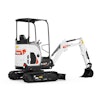Some good news for asphalt contractors – you’re above average when it comes to safety on the jobsite.
According to a report from the Plantmix Asphalt Industry of Kentucky (PAIKY), the National Asphalt Pavement Association (NAPA) has delivered its results from a recent safety benchmarking survey. Results indicate that the asphalt pavement industry has an injury rate lower than the general highway construction industry average. Companies accounting for a third of the total tonnage of NAPA’s membership reported on their OSHA safety recordable injury rates.
For the survey, both highway construction activities and plant operational activities for the industry were combined to reflect an overall incidence rate of 2.9 recordable injuries per 100 full-time equivalent (FTE) workers. This rate is substantially lower than the Bureau of Labor Statistics incidence rate estimate of 4.4 injuries per 100 FTEs for general highway construction.
Bravo to all of you for creating a safe environment and keeping your employees, as well as the traveling public, at the top of the list of priorities. Work zone safety is crucial for a construction site of any size, and should be top of mind for the entire construction team – from project managers and supervisors, to the workers and equipment operators.
Here are a few tips from Jonathan Spano, COO for Traffic Management Inc. (TMI) (trafficmanagement.com) to create the safest work zone possible for a nighttime construction project:
- Performance Class 3 Apparel – Workers must wear high-visibility reflective safety apparel, which most commonly includes a vest and trousers.
- Beacon Lights – These high-beam lights attach to construction zone signage and capture the attention of drivers, alerting them that they are approaching a work zone and should proceed with increased caution.
- Reflectivity of devices – All traffic control equipment, including cones, drums and signs must use highly-reflective lights during nighttime work.
- Proper warning sign placement – This is critical to the safety of workers and drivers. If the traffic control team is not familiar with the area, scout it in advance to anticipate any challenges this work zone may involve, preferably at the same time and on the same day of the week as the work will be taking place. Observe what the average speeds are of drivers in the area and also take note if the road is curvy or particularly rough.
- Truck Mounted Attenuators (TMAs) –These energy-absorbing devices are attached to the rear of trucks, acting as a barrier between workers and traffic. Drivers who lose control of their vehicles will first hit the TMA, which will fold and therefore absorb the impact while protecting the driver.
- Trained and experienced workers – The American Traffic Safety Services Association (ATSSA) has an extensive certification process for supervisors of highway work zones.
Keep up the good work – and stay safe out there!










![Hcm Ax Landcros Dual Branded Logo[25]](https://img.forconstructionpros.com/mindful/acbm/workspaces/default/uploads/2025/11/hcmaxlandcros-dual-branded-logo25.Qhg3vUCjoK.jpg?ar=16%3A9&auto=format%2Ccompress&bg=fff&fill-color=fff&fit=fill&h=135&q=70&w=240)




